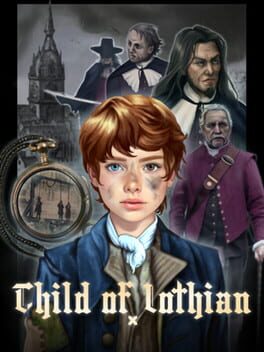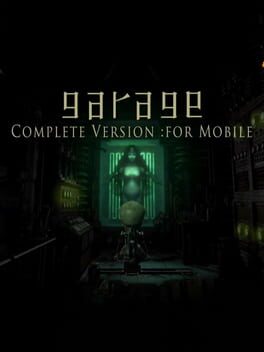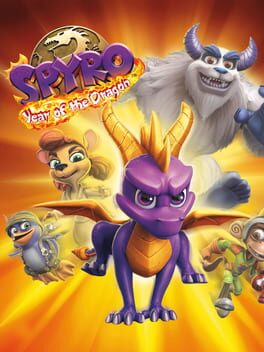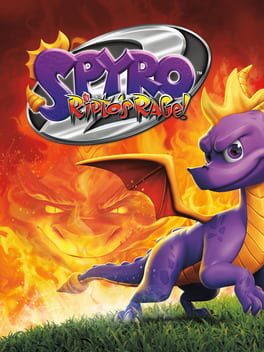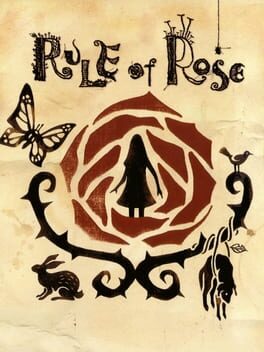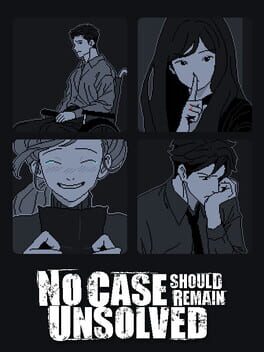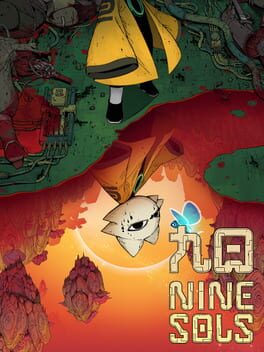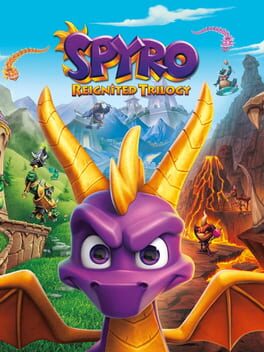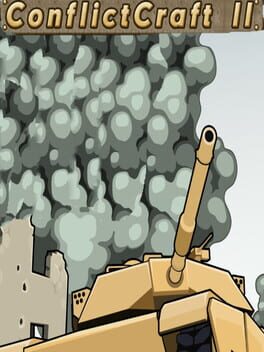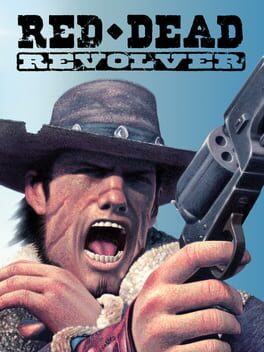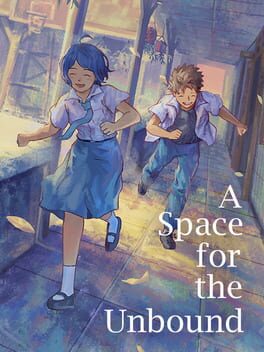Acquiescence
521 Reviews liked by Acquiescence
Child of Lothian
2022
This Dutch student project puts you in control of a little girl whose family has been summarily hanged in 18th centurty Edimburgh by witch hunters on accusations of devilry. Rescued by a kind stranger who disguised her as a boy and teaches her to survive as a street urchin, she will have to run errands for strangers, pickpocket and hide from the witch hunters hot on her tail.
Think of this short 60 minute game as a janky clone of A Plague Tale with much more basic gameplay and many of the same mechanics, like ringing bells with your slingshot to divert attention and hiding in tall grass to sneak past patrolling enemies. there are also alternate ways to complete your objectives: though nothing as creative as Deus Ex, they allow for some improvisation, rather than just doing the one thing the game expects from you.
On the presentation side, Child of Lothian can be visually impressive, despite the worst motion blur in the world, as the assets the students have produced to recreate old Scotland are very convincing, though the human models are less so.
What steals the show is the ending, which toys with your genre expectations and, while not particularly well storyboarded, comes off as genuinely unexpected and thus deserves a special mention of praise.
Think of this short 60 minute game as a janky clone of A Plague Tale with much more basic gameplay and many of the same mechanics, like ringing bells with your slingshot to divert attention and hiding in tall grass to sneak past patrolling enemies. there are also alternate ways to complete your objectives: though nothing as creative as Deus Ex, they allow for some improvisation, rather than just doing the one thing the game expects from you.
On the presentation side, Child of Lothian can be visually impressive, despite the worst motion blur in the world, as the assets the students have produced to recreate old Scotland are very convincing, though the human models are less so.
What steals the show is the ending, which toys with your genre expectations and, while not particularly well storyboarded, comes off as genuinely unexpected and thus deserves a special mention of praise.
The Thousand-Year Door had the bad luck of having years and years of pre-build hype that it simply did not live up to.
On the good side, I can say that the game looks beautiful (tho it really doesn't justify the loss of 60fps) and that the writing can be quite funny on occasions.
Aside from that, the game is really a downgrade in almost every single aspect from SMRPG. The level design has been reduced to walk left to right (and occasionally right to left). As an RPG, the game is a downgrade as you no longer level-up your stats, you only level up HP, FP and BP. The latter being the only one that makes sense leveling up as you use more and more badges. The lack of actual stats also limit that you are only allowed to power-up your attack when the story allows it.
The limit of only 1 party member on screen also kills any chance of having interesting moments with your party. There are no chances to develop and fully fledge any member of your party outside if the current one with you.
An finally, the story/pace is terrible at times. Episode 3 is specially bad with the player being asked to fight 20 times on the same scenario only to move up in a Wrestling-like ranking.
The game definitely does not lives up the hype and even with all its own flaws, Super Mario RPG remains a better game (and RPG!) than TTYD.
On the good side, I can say that the game looks beautiful (tho it really doesn't justify the loss of 60fps) and that the writing can be quite funny on occasions.
Aside from that, the game is really a downgrade in almost every single aspect from SMRPG. The level design has been reduced to walk left to right (and occasionally right to left). As an RPG, the game is a downgrade as you no longer level-up your stats, you only level up HP, FP and BP. The latter being the only one that makes sense leveling up as you use more and more badges. The lack of actual stats also limit that you are only allowed to power-up your attack when the story allows it.
The limit of only 1 party member on screen also kills any chance of having interesting moments with your party. There are no chances to develop and fully fledge any member of your party outside if the current one with you.
An finally, the story/pace is terrible at times. Episode 3 is specially bad with the player being asked to fight 20 times on the same scenario only to move up in a Wrestling-like ranking.
The game definitely does not lives up the hype and even with all its own flaws, Super Mario RPG remains a better game (and RPG!) than TTYD.
The Best Spyro game in my opinion as someone who hasn't played the original.
- The world's are well designed like in spyro 1
- The mini-games are better than in Spyro 2 which makes collecting the eggs less of a chore and a more fun experience
- Playing as the other characters helps keeping the game fresh and is more fun than what most people are saying
- The world's are well designed like in spyro 1
- The mini-games are better than in Spyro 2 which makes collecting the eggs less of a chore and a more fun experience
- Playing as the other characters helps keeping the game fresh and is more fun than what most people are saying
Rule of Rose
2006
It's a slog to play. Most of the time you just walk from one place to another. Combat is fine when there's a single enemy who don't require 40 hits to die, it becomes horrendous when you're forced to fight more than one.
It has a unique ambiance, some great moments, and the last hour is really worth getting to. It's the ultimate example of a game having bad gameplay but awesome narrative. If it had came out some years later it would have been an even shorter game and a walking sim and I think it would have been an unforgettable experience.
It has great elements, and I'm happy to have played it, but clearly I will never touch it ever again.
It has a unique ambiance, some great moments, and the last hour is really worth getting to. It's the ultimate example of a game having bad gameplay but awesome narrative. If it had came out some years later it would have been an even shorter game and a walking sim and I think it would have been an unforgettable experience.
It has great elements, and I'm happy to have played it, but clearly I will never touch it ever again.
Pretty good detective game, great even for being so short. A girl named Seowon went missing and was never found leaving the case unsolved, until years later the retired detective who handled the investigation is urged to reexamine the details and try to figure out what happened to her
Searching through a mess of past conversations with the people relevant to the case, the goal of the game is to make sense of the detective’s distorted memories by reordering these conversations and assigning them to the right person, initially being confusingly jumbled until they gradually fit in proper order and you start to get an understanding of what was really going on. It’s only about 3 hours but found its mystery pretty compelling, and I liked the game’s simple pixel style and music which fit its moody tone really well
Searching through a mess of past conversations with the people relevant to the case, the goal of the game is to make sense of the detective’s distorted memories by reordering these conversations and assigning them to the right person, initially being confusingly jumbled until they gradually fit in proper order and you start to get an understanding of what was really going on. It’s only about 3 hours but found its mystery pretty compelling, and I liked the game’s simple pixel style and music which fit its moody tone really well
Nine Sols
2024
Taiwanese developer Red Candle Games have already proven themselves as one of my favorite indie studios with Detention and Devotion (two horror games I hold in very high regard), and I was especially happy to see them still push forward with their next game despite the nonsense surrounding Devotion’s continued ban from storefronts. Branching out into making a Metroidvania with Sekiro inspired combat no less is quite a shift from their previous works though, and I was very curious to see how a team of their caliber would handle such a different project
Needless to say, very satisfied with it. Nine Sols is fantastic, certainly drawing from the likes of Sekiro’s brutally difficult “parry or die” gameplay but adopting it to a 2D style incredibly well. It stands out on its own by forgoing a direct posture system in favor of its talisman mechanic (where you instead quickly attach bombs earned with parries to enemies), which gets so fun once your skills open up and makes for some of the most entertaining combat I’ve played of these type of games. The bosses in particular are really cool to fight against, initially seeming like insurmountable walls that gradually get more and more manageable as you memorize their patterns, until you can somehow effortlessly flow against their relentless attacks without even thinking. The final boss for the true ending is especially awesome in this regard, honestly one of the most rewarding I’ve fought in recent memory
Beyond just the combat, it further impresses with its unique “Taopunk” world-building and heavier narrative focus that’s a cut above many others in the genre. There’s not many Metroidvanias where I was as invested in the dialogue and characters quite like this one, Yi in particular was endearing as the main protag, and the story surrounding his vengeful path against the “Nine Sols” he once worked with was really interesting to follow, getting surprisingly heartfelt even. The game’s hub, the Four Seasons Pavilion, is nice too in how it encourages you to keep up with the other characters and watch as it changes in appearance the more items you bring to Shuanshuan
The game’s music is great and the handdrawn 2D art/animations for characters and environments is lovely, mixing beautiful aesthetics with grungy underground sci-fi machinery, and using detailed manga style panels for story moments that further add to the excellent presentation
Map exploration was enjoyable too. It’s not really Hollow Knight level in that regard, but has solid variety and was fun to clear out areas looking for chests or optional bosses. Traversal is limited initially but also gets pretty good as you unlock stuff like air dash and double jump for platforming sections. The priority was definitely more towards its combat here, but still well done
Needless to say, very satisfied with it. Nine Sols is fantastic, certainly drawing from the likes of Sekiro’s brutally difficult “parry or die” gameplay but adopting it to a 2D style incredibly well. It stands out on its own by forgoing a direct posture system in favor of its talisman mechanic (where you instead quickly attach bombs earned with parries to enemies), which gets so fun once your skills open up and makes for some of the most entertaining combat I’ve played of these type of games. The bosses in particular are really cool to fight against, initially seeming like insurmountable walls that gradually get more and more manageable as you memorize their patterns, until you can somehow effortlessly flow against their relentless attacks without even thinking. The final boss for the true ending is especially awesome in this regard, honestly one of the most rewarding I’ve fought in recent memory
Beyond just the combat, it further impresses with its unique “Taopunk” world-building and heavier narrative focus that’s a cut above many others in the genre. There’s not many Metroidvanias where I was as invested in the dialogue and characters quite like this one, Yi in particular was endearing as the main protag, and the story surrounding his vengeful path against the “Nine Sols” he once worked with was really interesting to follow, getting surprisingly heartfelt even. The game’s hub, the Four Seasons Pavilion, is nice too in how it encourages you to keep up with the other characters and watch as it changes in appearance the more items you bring to Shuanshuan
The game’s music is great and the handdrawn 2D art/animations for characters and environments is lovely, mixing beautiful aesthetics with grungy underground sci-fi machinery, and using detailed manga style panels for story moments that further add to the excellent presentation
Map exploration was enjoyable too. It’s not really Hollow Knight level in that regard, but has solid variety and was fun to clear out areas looking for chests or optional bosses. Traversal is limited initially but also gets pretty good as you unlock stuff like air dash and double jump for platforming sections. The priority was definitely more towards its combat here, but still well done
ConflictCraft 2
2022
Six years later, this is exactly the same as the first one, only 15-20 times more expensive, with more bugs and exponentially easier maps. While the first ConflictCraft will test your ability for multitasking and prioritization, this sequel is an absolute breeze from start to finish.
The bones of that really fun alternative strategy game are still there, but there simply isn't enough good content to recommend it over the original.
In the end, you can blow 10 bucks on ConflictCraft 2 and have a remarkably worse time on a game that's 99% recycled content (only new thing I found was a bunker that can attack both ground and air targets, but that might actually have been a bug), or you can spend 50 cents on ConflictCraft 1 and have a much better time.
Do the math.
The bones of that really fun alternative strategy game are still there, but there simply isn't enough good content to recommend it over the original.
In the end, you can blow 10 bucks on ConflictCraft 2 and have a remarkably worse time on a game that's 99% recycled content (only new thing I found was a bunker that can attack both ground and air targets, but that might actually have been a bug), or you can spend 50 cents on ConflictCraft 1 and have a much better time.
Do the math.
Red Dead Revolver
2004
Revolver is one of Rockstar's varied offerings from the PS2 era, sitting somewhere just above being completely forgotten, mostly because of how the Red Dead series would capture new audiences long after Revolver's time.
The best part of Revolver is easily its presentation. From the little things like the constant use of gunshots while navigating the menus, to the heavily post-processed old-timey look and feel, there's a lot to enjoy in how the game presents itself. It creates this casually violent vibe that feels true to the setting of the game, thus achieving authenticity like its successors, but through a different way.
Revolver plays mostly fine, but with some rough caveats. There's a lot of shooting as you would expect, and the game gets better to play as you unlock stronger, more accurate weapons that makes the enemies feel less like bullet sponges. But it's hard to shake that feeling for most of its runtime, and that's probably one of the biggest things that lets the game down. The dead eye mechanic can vary wildly from life saving crutch to disappointingly deadly, mostly because of how inconsistent its damage output can be, and that only worsens the bullet sponge feel. Sometimes the hit detection can be quite unreliable, especially when you're shooting at enemies jumping from cover, and it's definitely the game's most annoying quirk. At least the aiming controls aren't that bad, considering it's a PS2 game.
For the most part, the levels are quite straightforward in structure. Get to the end and kill everything that tries to kill you. There are a couple of oddballs, like playing as different characters, or an awkward stealth-focused level, and these aren't exactly well executed. But at least it makes the game feel a bit less one-note.
I do have a problem with some levels having wild difficulty spikes, like the bridge offensive level with the general, or the Mansion levels near the end of the game. The latter pretty much soured my opinion about this game quite a bit, it's the kind of poorly designed level that feels like it just wants to make you angry for no good reason. It feels like old school Rockstar design in the worst way possible.
I'm trying my best to balance out the sourness from these bad levels with all the stuff I enjoyed about the game before, but even then, I still can't call this a good game. I can't deny the cool factor of Revolver, and it's fun to see how this game differs from the newer Red Dead games, but there's just a lot of things that pissed me off here, haha.
The best part of Revolver is easily its presentation. From the little things like the constant use of gunshots while navigating the menus, to the heavily post-processed old-timey look and feel, there's a lot to enjoy in how the game presents itself. It creates this casually violent vibe that feels true to the setting of the game, thus achieving authenticity like its successors, but through a different way.
Revolver plays mostly fine, but with some rough caveats. There's a lot of shooting as you would expect, and the game gets better to play as you unlock stronger, more accurate weapons that makes the enemies feel less like bullet sponges. But it's hard to shake that feeling for most of its runtime, and that's probably one of the biggest things that lets the game down. The dead eye mechanic can vary wildly from life saving crutch to disappointingly deadly, mostly because of how inconsistent its damage output can be, and that only worsens the bullet sponge feel. Sometimes the hit detection can be quite unreliable, especially when you're shooting at enemies jumping from cover, and it's definitely the game's most annoying quirk. At least the aiming controls aren't that bad, considering it's a PS2 game.
For the most part, the levels are quite straightforward in structure. Get to the end and kill everything that tries to kill you. There are a couple of oddballs, like playing as different characters, or an awkward stealth-focused level, and these aren't exactly well executed. But at least it makes the game feel a bit less one-note.
I do have a problem with some levels having wild difficulty spikes, like the bridge offensive level with the general, or the Mansion levels near the end of the game. The latter pretty much soured my opinion about this game quite a bit, it's the kind of poorly designed level that feels like it just wants to make you angry for no good reason. It feels like old school Rockstar design in the worst way possible.
I'm trying my best to balance out the sourness from these bad levels with all the stuff I enjoyed about the game before, but even then, I still can't call this a good game. I can't deny the cool factor of Revolver, and it's fun to see how this game differs from the newer Red Dead games, but there's just a lot of things that pissed me off here, haha.
Another interesting new take on the ever-growing sub-genre of Detective Games.
No Case Should Remain Unsolved (NCSRU) revolves around unpicking information based on quotes and memories.
Predominantly you are reading text, sometimes accompanied by small bits of art, taking these short conversations and rearranging them like a jigsaw puzzle.
Much like a jigsaw puzzle you are identifying where things go based off of your own logic and previous information you have gathered.
With a jigsaw you’ll put specific colours close together, with the assumption that they will create a piece of the wider picture.
In NCSRU, if you are reading a conversation where someone refers to their child, you may gather these with the assumption it was a mother speaking.
However as the greater picture reveals itself, in a jigsaw, perhaps the colours you grouped together are from two distinct places, a red apple and a red t-shirt?
With NCSRU maybe their child isn’t a child anymore, maybe they’re not a parent and it ties to their profession?
The genius of NCSRU is how the game plays with your assumptions throughout, and when you stop to look at things from different perspectives, that is when the eureka moments happen.
Like any good puzzler, this game is full of them and also gives a great endorphin release when a domino effect occurs, as one conclusion leads to another and more doors become unlocked.
The locks themselves have some variety. Firstly you gain actual keys within the game for not just assigning who said what correctly, but the chronology of it.
Other locks will be behind specific information such as confirming important dates and times or pointing out key contradictions.
NCSRU’s visual information mostly revolves around quotes, but each will get assigned hashtags that allow you to connect the dots a little easier.
At times I wished there was a search function, but I appreciate the challenge would be vastly different and in this case probably easier. However when you get deeper and are looking for that one thing you know someone said to progress, the search can be tiring and made a little more difficult for me personally by some similar and unfamiliar names due to the Korean origins of the game.
Sadly even though the small amount of art this game has is wonderful, you are spending the majority of your time looking at a screen full of columns of text, this is not a complete turn-off for me, but I imagine it would be for many others.
As I say, the art there is, is simple and nice. The music too, is not mind-blowing but brilliantly implemented to change alongside your progress and when you notice it, it fills your heart with joy.
No Case Should Remain Unsolved is a compact game, taking a little over three hours to complete, but this felt like just the right amount of time for it to tell the story it wanted to.
One where not only are you unpicking lies but one where it really cleverly conveys the unreliability of memories, how key things can be missed, assumptions can pull things together which are separate and so much more.
At times you are skimming text and it feels a little like busy work, but the rest of it you are piecing together a beautiful puzzle and feeling like a genius while doing so.
No Case Should Remain Unsolved (NCSRU) revolves around unpicking information based on quotes and memories.
Predominantly you are reading text, sometimes accompanied by small bits of art, taking these short conversations and rearranging them like a jigsaw puzzle.
Much like a jigsaw puzzle you are identifying where things go based off of your own logic and previous information you have gathered.
With a jigsaw you’ll put specific colours close together, with the assumption that they will create a piece of the wider picture.
In NCSRU, if you are reading a conversation where someone refers to their child, you may gather these with the assumption it was a mother speaking.
However as the greater picture reveals itself, in a jigsaw, perhaps the colours you grouped together are from two distinct places, a red apple and a red t-shirt?
With NCSRU maybe their child isn’t a child anymore, maybe they’re not a parent and it ties to their profession?
The genius of NCSRU is how the game plays with your assumptions throughout, and when you stop to look at things from different perspectives, that is when the eureka moments happen.
Like any good puzzler, this game is full of them and also gives a great endorphin release when a domino effect occurs, as one conclusion leads to another and more doors become unlocked.
The locks themselves have some variety. Firstly you gain actual keys within the game for not just assigning who said what correctly, but the chronology of it.
Other locks will be behind specific information such as confirming important dates and times or pointing out key contradictions.
NCSRU’s visual information mostly revolves around quotes, but each will get assigned hashtags that allow you to connect the dots a little easier.
At times I wished there was a search function, but I appreciate the challenge would be vastly different and in this case probably easier. However when you get deeper and are looking for that one thing you know someone said to progress, the search can be tiring and made a little more difficult for me personally by some similar and unfamiliar names due to the Korean origins of the game.
Sadly even though the small amount of art this game has is wonderful, you are spending the majority of your time looking at a screen full of columns of text, this is not a complete turn-off for me, but I imagine it would be for many others.
As I say, the art there is, is simple and nice. The music too, is not mind-blowing but brilliantly implemented to change alongside your progress and when you notice it, it fills your heart with joy.
No Case Should Remain Unsolved is a compact game, taking a little over three hours to complete, but this felt like just the right amount of time for it to tell the story it wanted to.
One where not only are you unpicking lies but one where it really cleverly conveys the unreliability of memories, how key things can be missed, assumptions can pull things together which are separate and so much more.
At times you are skimming text and it feels a little like busy work, but the rest of it you are piecing together a beautiful puzzle and feeling like a genius while doing so.
I would have considered playing more of A Space for the Unbound if the gameplay wasn't so bad. Visual novels like this would benefit greatly from cutting the fat. The shallow minigames, rudimentary puzzles, and numerous fetch quests feel like unnecessary padding. Why bother having gameplay at all if it will be this half-baked?
Based on the two hours I played, the story leaves a lot to be desired. Tonally, it feels all over the place. It was constantly bouncing between serious and silly moments in a way that never really meshed together well. Also, the old-school/rigid gender roles are prominent here, and that detracted greatly from the love story for me. Do people still think this is what a healthy relationship looks like? It feels very one-sided.
Based on the two hours I played, the story leaves a lot to be desired. Tonally, it feels all over the place. It was constantly bouncing between serious and silly moments in a way that never really meshed together well. Also, the old-school/rigid gender roles are prominent here, and that detracted greatly from the love story for me. Do people still think this is what a healthy relationship looks like? It feels very one-sided.
